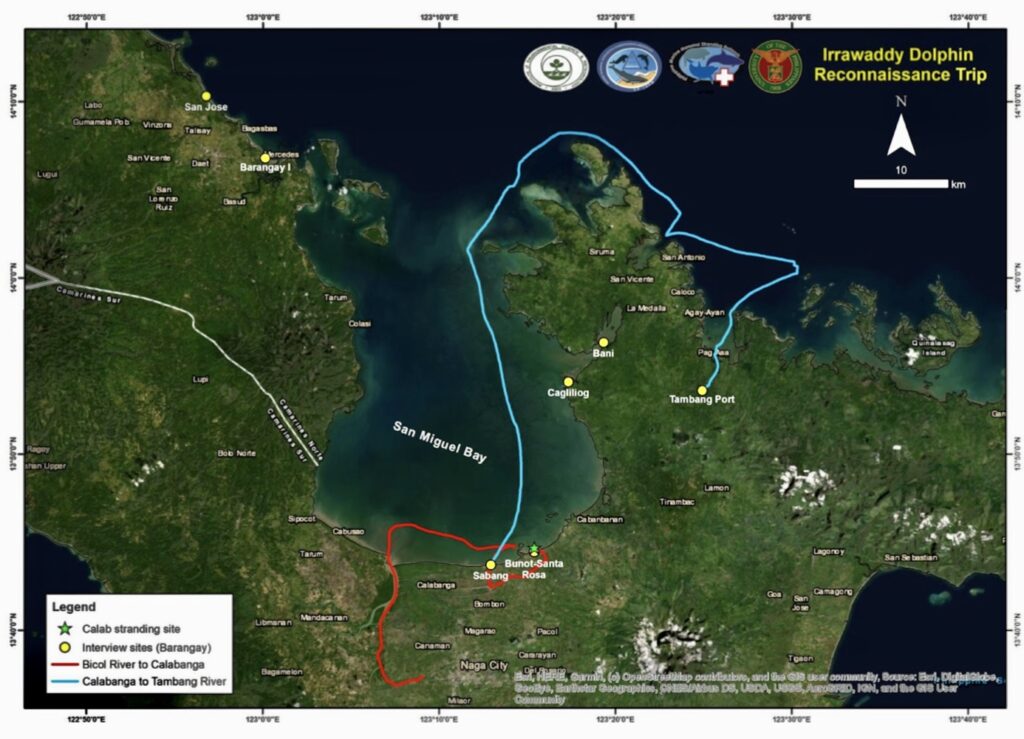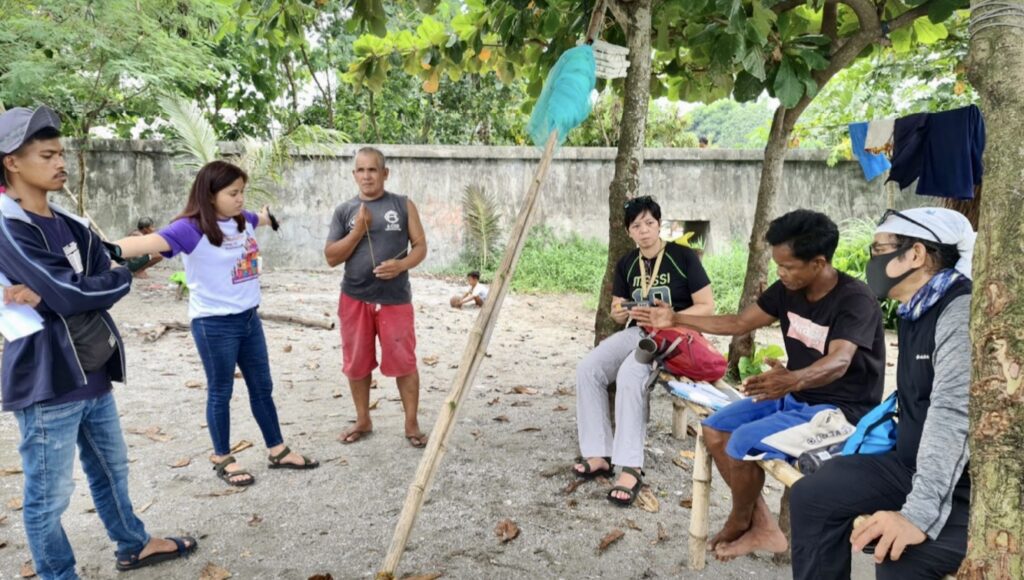Text by Henrylito D. Tacio
Photos courtesy of IESM/BFAR5
A subpopulation of dolphins may have been thriving for decades in the San Miguel Bay area in Bicol, even while so far eluding capture and official documentation. So much so that scientists from the University of the Philippines – Diliman College of Science (UPD-CS) are hot on the trail of this rare and endangered marine species.
What stirred the interest of the UP scientists was when an Irrawaddy dolphin (scientific name: Orcaella brevirostris) was found accidentally entangled and drowned in a fisherman’s net in San Miguel Bay off Calabanga, Camarines Sur last August 16.
The Department of Environment and Natural Resources (DENR) considered the Irrawaddy dolphins as “critically endangered,” which means the species is facing an extremely high risk of extinction in the wild.
“This was the first time that this species had been found in the Eastern part or Pacific side of the country,” said the Science Communication Team (SCT) of the UPD-CS.
The new discovery prompted Dr. Lemnuel Aragones to organize a reconnaissance trip in the hopes of finding more of these dolphins in the area. He is a professor at the UPD-CS Institute of Environmental Science and Meteorology (IESM) and president of the Philippine Marine Mammals Stranding Network (PMMSN).
So, from October 21 to 24, a joint team of researchers from the IESM and the regional office 5 of the Bureau of Fisheries and Aquatic Resources (BFAR) conducted opportunistic boat surveys and key informant interviews with local fisherfolk in areas surrounding the location of the initial Irrawaddy dolphin sighting and beyond.
The team carefully crafted open-ended questions for the interviewees, allowing the latter to describe the features of the dolphins that they saw, or still see, in their areas. The responses helped the researchers validate the species of the creatures in these sightings.
Some of the informants noted telltale features that point to these being Irrawaddy dolphins — such as their small size (2-2.5 meters long); the absence of a beak; and a small rounded dorsal fin.
Afterwards, the interviewees were shown pictures of Irrawaddy dolphins so they could confirm the actual appearance of the creatures they had seen. As an added step, the researchers also prudently documented the interviewees’ fishing grounds, gear, and catch.
Based on some local key informants’ long-term recollections, it was postulated that the rare marine species may be thriving in San Miguel Bay and seasonally visiting specific areas for several decades now.
“Some preliminary but important information derived from this recon trip includes the possible seasonal movement of the dolphins in response to prey abundance, and some localities have confirmed sighting these animals in their areas,” Dr. Aragones said.
“Our key informant interviewees provided preliminary information which showed that these animals may have been in the area since the 1960s, and are usually sighted in small groups of three to seven individuals. There’s even an exceptional sighting in 2021 of a group of over ten dolphins by a key informant from Tinambac, Camarines Sur,” he added.
According to Dr. Aragones, “the locals just referred to them as dolphins, and this might have been the reason why they all along thought that they were just the usual ordinary ones often sighted offshore.”
The reconnaissance trip was part of the IESM’s Assessment and Mobilization of Research Initiatives on Philippine Marine Mammals (PHLMarMams) Project funded by the Department of Science and Technology – Philippine Council for Agriculture, Aquatic and Natural Resources Research and Development (DOST-PCAARRD).
The Irrawaddy dolphin was first described by Sir Richard Owen in 1866 based on a specimen found in 1852. Genetically, it is closely related to the killer whale (orca). It exists in small isolated populations around Southeast Asia.
Apart from other Irrawaddy dolphin populations scattered in South and Southeast Asia, all previous sightings in the Philippines were exclusively in the Western part of the archipelago: in Malampaya Sound, Palawan, and in the Iloilo-Guimaras-Negros Occidental area.
The Irrawaddy dolphins are thought to reach sexual maturity at seven to nine years, according to studies. Its gestation period is 14 months; cows give birth to a single calf every two to three years. Its lifespan is about 30 years.
Like the dugong, the Irrawaddy dolphin is on its way to extinction, according to Red List Status of Marine Mammals in the Philippines.


“Populations of dugong and Irrawaddy dolphins in the country were found declining despite legislation and conservation efforts,” said Marine Wildlife Watch of the Philippines, one of the leading researchers of the book, in a statement.
“(Both species) continue to face threats such as destruction of habitat, entanglement in fishing nets, solid wastes, coastal development, boat traffic, and sedimentation all made more severe with climate change impacts,” the statement added.
The book is considered the most comprehensive and up-to-date list of the country’s threatened dolphins, whales and dugong. It assessed the conservation status of 26 out of 28 marine mammal species and subspecies found in the country.

